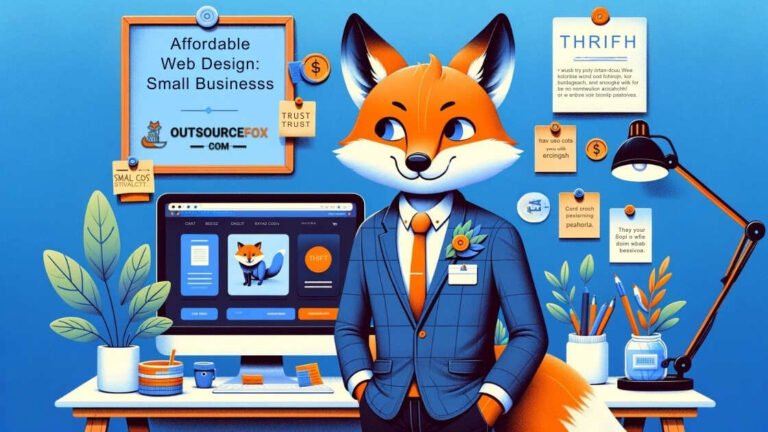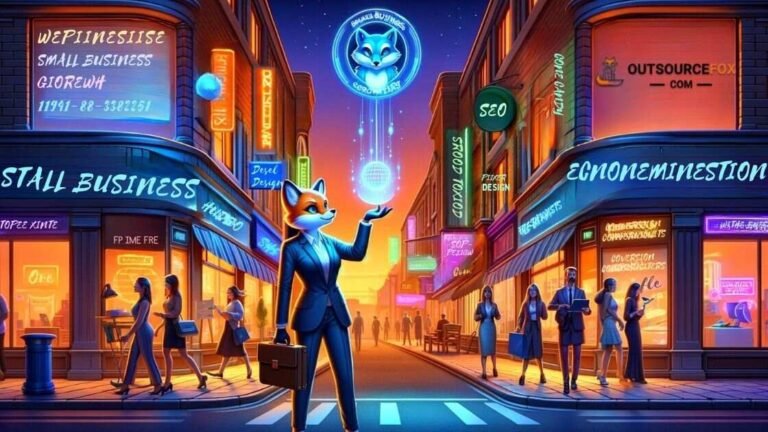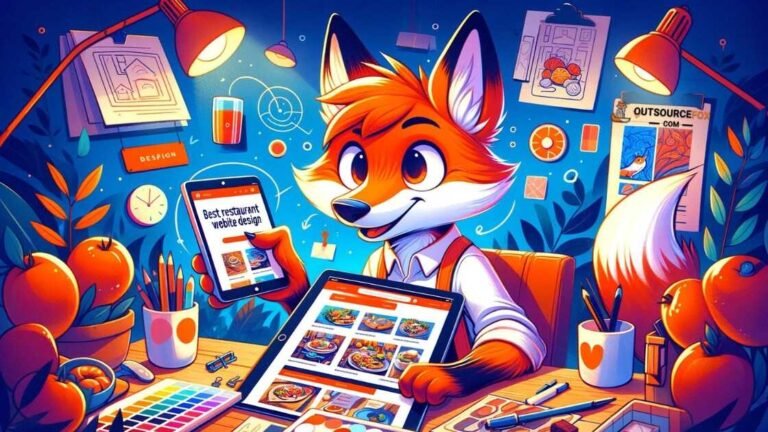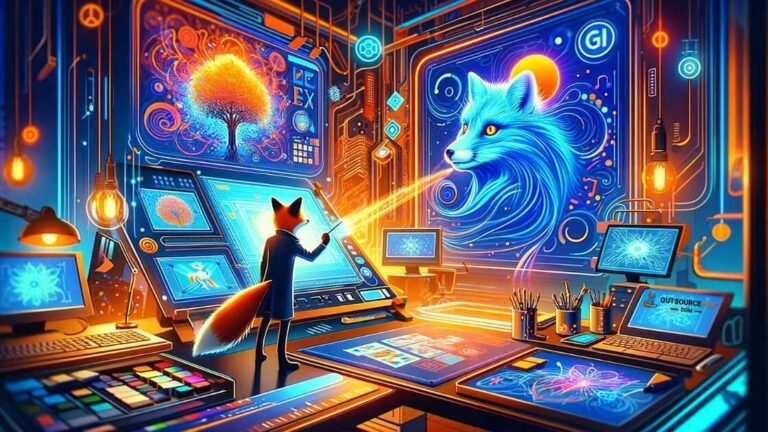
Crafting a User-Friendly Restaurant Website: A Comprehensive Guide to Restaurant Website Design
Discover how to elevate your restaurant’s online presence with exceptional website design focused on user experience. Learn how to attract new customers, enhance the dining experience, and boost your brand with a well-crafted restaurant website.
Welcome to the world of restaurant website design, where the user experience reigns supreme. The user experience with your restaurant website can significantly impact your potential customer’s decision to dine with you. A well-designed restaurant website can enhance the overall dining experience, even before the customer sets foot in your establishment.
The importance of a great restaurant website design cannot be overstated. It’s not just about having a beautiful display of photos and an online menu. It’s about creating a user-friendly platform that provides a seamless browsing experience for your potential customers, helping them decide what to include in their order, make a reservation, or even place an order for takeout or delivery.
Navigating through your restaurant website should be as enjoyable and straightforward as navigating through your physical restaurant. This means your website designs need to be clean, intuitive, and easily accessible on any platform, from desktops to mobile devices. Crafting a user-friendly restaurant website involves considering every detail, from the homepage to the contact page, ensuring your restaurant’s message and brand are consistently represented.
Your restaurant website is also your most powerful marketing tool. From showcasing your menu to promoting special offers, it’s the perfect platform to communicate directly with your customers and keep them coming back. Integrating your social media pages and accounts into your website design can further enhance the user experience and extend your online presence.
In this guide to restaurant website design, we’ll provide you with practical tips on how to build a restaurant website that not only looks good but also functions effectively. We’ll delve into essential aspects like SEO, online ordering systems, and how to optimize your website for both search engines and users. We’ll also discuss how to incorporate restaurant technology and other features to enhance the user experience and attract new customers.
Whether you’re a restaurant owner looking to create a new website or looking to improve your current one, this guide will equip you with the knowledge and tools you need to succeed in the competitive restaurant industry. So, get ready to embark on a journey towards creating the perfect restaurant website that offers an exceptional user experience and helps grow your business.
The Importance of User Experience in Restaurant Website Design
In the competitive restaurant industry, website design plays a crucial role in attracting potential customers and providing them with the information they need. A well-designed restaurant website not only displays your menu but also provides an easy online ordering system for takeout or delivery, creating a seamless dining experience even before the diner sets foot in your establishment.
A great restaurant website design prioritizes user experience. The navigation should be user-friendly, allowing website visitors to easily find what they’re looking for, whether it’s the menu, hours of operation, or how to make a reservation. It’s vital to test your website on different platforms like desktops and mobile devices to ensure a good user experience across all devices.
The homepage is arguably the most important part of your restaurant’s website. It’s the first page that potential customers see, so it should effectively communicate your brand and entice diners to explore further. High-quality photos, a clear display of your menu, and prominent calls to action (such as ‘order online’ or ‘make a reservation’) are key elements to include.
SEO, or search engine optimization, is another critical aspect of restaurant website design. SEO helps improve your rank on search engines, making it easier for potential customers to find you. This involves using keywords related to your restaurant and its offerings throughout your website, as well as optimizing meta tags and descriptions.

Social media integration is another effective restaurant marketing strategy. Displaying social media pages directly on your website not only increases your online presence but also allows you to communicate with your customers more effectively. It’s a great way to keep them coming back by showcasing new menu items, special offers, and customer reviews.
Incorporating restaurant technology, such as an online ordering system or reservation platform, can significantly enhance the user experience on your restaurant website. These features not only make it convenient for customers to order online or make reservations but also streamline operations on your end.
Crafting a user-friendly restaurant website that provides a great user experience is essential for any successful restaurant business. By following these restaurant website design tips, you can build a restaurant website that attracts new customers, promotes your brand, and ultimately, boosts your bottom line. So, whether you’re a new restaurant owner or looking to improve your existing website, remember that great restaurant website design starts with putting the user experience first.
So how can you improve the UX design of your restaurant’s website? Here are some key areas to focus on:
- Ease of Navigation: Your website should be straightforward and intuitive. Customers should be able to find essential information – such as your menu, location, and opening hours – within a few clicks.
- Mobile Responsiveness: More people are browsing the web on their phones than ever before. If your website isn’t mobile-friendly, you could be missing out on a significant number of potential customers.
- Page Load Speed: Slow-loading pages can frustrate users and increase your bounce rate. Optimize your images and streamline your code to ensure your site loads quickly.
A friend of mine recently decided to try a new restaurant in town. She found their website online, but it was so slow and confusing that she gave up and ordered from her usual pizza place instead. The restaurant lost a potential customer – all because of poor UX design.
Understanding Your Potential Customer: Building a Restaurant Website with the Diner in Mind
Designing your restaurant’s website is not just about aesthetics; it’s about understanding your potential customers and their needs. Whether they’re looking for a quick lunch spot or planning a special dinner, diners turn to your website for specific information.
To cater to their needs, your website should quickly provide answers to the most common questions:
- What kind of food do you serve? A well-organized, easy-to-read menu is a must. Include high-quality photos of your dishes to entice potential customers.
- Where are you located? Make sure your address is visible, and consider embedding a Google map for easy directions.
- When are you open? Display your opening hours prominently on your homepage.
- How can I order? If you offer online ordering, make it obvious. Customers shouldn’t have to search for this option.
Let’s take a look at how some successful restaurants approach these questions.
| Restaurant | Approach |
|---|---|
| Chipotle | Their homepage immediately displays a bold “Order Now” button. The menu is easily accessible, with clear photos and descriptions of each item. |
| Starbucks | Their website highlights their mobile app for easy ordering. Store locations are readily available through a search bar at the top of the page. |
| The French Laundry | This high-end restaurant offers a different approach. Their website emphasizes their unique dining experience, with beautiful photos and detailed descriptions of their tasting menus. |
Remember, your website is an extension of your restaurant. It should reflect your brand’s personality and make potential customers excited to dine with you.
Key Elements of a Great Restaurant Website
A. Navigational Ease and Web Design
The design of your restaurant’s website plays a crucial role in its success. Not only should it visually represent your brand, but it should also be easy to navigate. A user-friendly website encourages potential customers to explore, make reservations, place orders, and ultimately choose your restaurant over the competition.
Here are some tips for effective web design:
- Keep it simple: Avoid cluttering your website with unnecessary information or overly complex designs. Remember, the primary goal is to guide visitors to essential information like your menu, location, and ordering system.
- Use high-quality images: Pictures of your dishes can make mouths water and persuade visitors to try your food. Consider hiring a professional food photographer to capture your menu items at their best.
- Incorporate your brand: Your website should reflect your restaurant’s personality and ambiance. Use colors, fonts, and imagery that align with your brand identity.
B. Online Ordering System: Enhancing the Dining Experience
In today’s digital age, an online ordering system is no longer a nice-to-have—it’s a must. Whether it’s for delivery or pickup, customers appreciate the convenience of ordering food with just a few clicks.
An efficient online ordering system can boost your sales, improve order accuracy, and build customer loyalty. Plus, when customers order directly from your website (rather than a third-party delivery service), you can avoid hefty commission fees.
C. SEO: Maximizing Visibility for Your Restaurant
Search engine optimization (SEO) is a powerful tool for increasing your restaurant’s online visibility. By optimizing your website for search engines, you can appear higher in search results when potential customers are looking for restaurants like yours.
Key SEO strategies for restaurants include:
- Keyword optimization: Use relevant keywords throughout your website to help search engines understand what your site is about.
- Local SEO: Claim your Google My Business listing and keep your contact information consistent across all platforms to boost your visibility in local search results.
Social Media and Restaurant Marketing: Integrating Platforms for a Cohesive Brand Image
Social media is a powerful marketing tool for restaurants. It allows you to connect with your customers, promote your offerings, and strengthen your brand image1. However, it’s essential to integrate your social media platforms with your website to create a cohesive online presence.
A. Consistent Branding Across Platforms
Your branding should be consistent across all platforms to reinforce your restaurant’s identity. Use the same logo, color scheme, and tone of voice on your website and social media channels. This consistency helps build brand recognition and trust among your audience.
B. Promoting Your Website on Social Media
Promote your website on your social media channels to drive traffic. For instance, you can share blog posts, announce menu updates, or highlight special promotions that encourage followers to visit your website.
C. Integrating Social Media into Your Website
Conversely, integrating social media into your website can increase your followers and engagement. Include social media buttons on your site that link to your profiles. You could also display a live Instagram or Twitter feed on your homepage to showcase customer testimonials or photos of your dishes.
D. Leveraging User-Generated Content
Encourage customers to share their dining experiences on social media. User-generated content can act as an authentic, free promotion for your restaurant. Plus, it can provide you with valuable content to share on your channels and website.
Remember, social media should not replace your website but complement it. A well-designed, user-friendly website is still crucial for making a strong first impression, providing essential information, and facilitating online orders or reservations.
Top Tips for Optimizing Your Restaurant Website Design
In the digital era, the importance of a well-optimized website for restaurants cannot be overstated. It’s not just about having an online presence; it’s about creating a virtual space that is an extension of your physical establishment and offers an engaging experience for your potential customers. Here are some top tips to optimize your restaurant website design effectively.
1. User-Friendly Interface:
The first impression counts. Make sure your website is easy to navigate with a clean layout and intuitive menus. Visitors should be able to find essential information like your menu, location, opening hours, and contact details without any hassle. A complicated or confusing interface can deter potential customers.
2. High-Quality Imagery:
A picture speaks a thousand words – particularly when it comes to food. Use high-quality, appetizing images of your dishes to engage visitors and entice them to dine at your restaurant. If possible, hire a professional food photographer to capture your offerings in the best light.
3. Mobile Optimization:
With more people browsing the web on mobile devices than ever before, a mobile-optimized site is a must. Ensure your website looks good and functions well on all screen sizes. This includes making sure text is readable, buttons are easily clickable, and page load times are quick.
4. Online Reservation System:
Convenience is key in today’s fast-paced world. Include an online reservation system on your website, allowing customers to book a table within a few clicks. This not only enhances the user experience but also helps streamline your booking process.
5. Incorporate SEO:
Search engine optimization (SEO) is crucial for improving your website’s visibility on search engines. Use relevant keywords in your content, optimize your images, and include meta tags to make your website more discoverable.

The Future of Restaurant Technology: Keeping Up with Trends
With technology permeating every aspect of our lives, the restaurant industry is no exception. Technological innovations are shaping the future of dining, and staying ahead of these trends can provide restaurants with a competitive edge. Here’s a look at what the future holds for restaurant technology.
1. Online Ordering and Delivery Platforms:
Online ordering has exploded in popularity, primarily driven by convenience. Restaurants that offer online ordering and delivery services can reach a wider customer base and increase their sales. This trend is set to continue, with more advanced features like real-time order tracking and personalized recommendations.
2. Artificial Intelligence (AI):
AI and machine learning are making their way into the restaurant industry. From AI-powered chatbots for customer service to predictive analytics for inventory management, these technologies can streamline operations and enhance customer experiences. Furthermore, AI can provide personalized dining recommendations based on past orders, boosting customer satisfaction and loyalty.
3. Contactless Payments:
In the wake of the COVID-19 pandemic, contactless payments have become the norm. Digital wallets, mobile payments, and contactless cards offer a safer, quicker, and more convenient payment method, improving the overall dining experience.
4. Internet of Things (IoT):
IoT devices can help restaurants improve efficiency and reduce waste. For instance, smart refrigerators can monitor food stock and temperatures, alerting staff when supplies are low or when food safety standards aren’t met.
5. Virtual Reality (VR):
While still in its infancy, VR technology holds great potential in providing immersive dining experiences. Imagine offering customers a virtual tour of your vineyard or a 360-degree view of your kitchen right from their table!
Conclusion: A Comprehensive Guide to Restaurant Website Design
In the digital era where online presence is as crucial as the physical one, having a well-designed and functional website is imperative for any restaurant. A comprehensive approach to restaurant website design can significantly influence your business’s success by attracting potential customers, enhancing their dining experience, and ultimately driving growth.
This guide has highlighted key aspects of effective website design, from creating a user-friendly interface and incorporating high-quality imagery to optimizing for mobile use and integrating an online reservation system. Each of these components plays a critical role in making your website not just aesthetically pleasing but also a powerful marketing tool.
Moreover, the importance of SEO for improving visibility cannot be overstated. A well-optimized website that ranks high on search engine results can attract more visitors and increase your chances of converting them into customers.
In the increasingly competitive restaurant industry, your website serves as the first point of contact for many potential customers. It’s your chance to make a lasting impression, showcase what you have to offer, and convince visitors that your restaurant is worth trying. Therefore, investing time, effort, and resources in optimizing your website design is not just beneficial but essential.
As technology continues to evolve, it’s also important to stay updated with the latest trends and adapt your website accordingly. From AI chatbots to VR tours, the future of restaurant technology promises exciting opportunities for enhancing the online dining experience.
A comprehensive approach to restaurant website design involves a fine balance of aesthetics, functionality, and continuous optimization. By mastering these elements, you can create a website that stands out, engages visitors, and turns them into loyal customers. Remember, in the world of gastronomy, your website is the appetizer – make it enticing enough to lead your customers to the main course!






